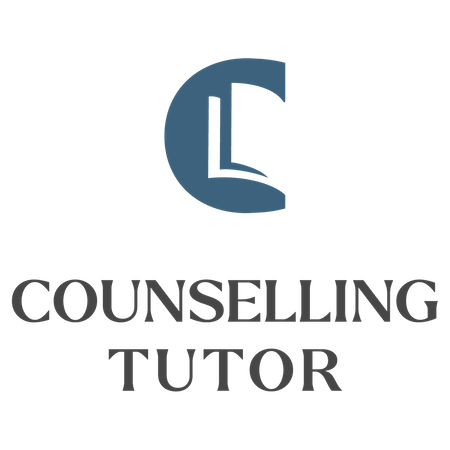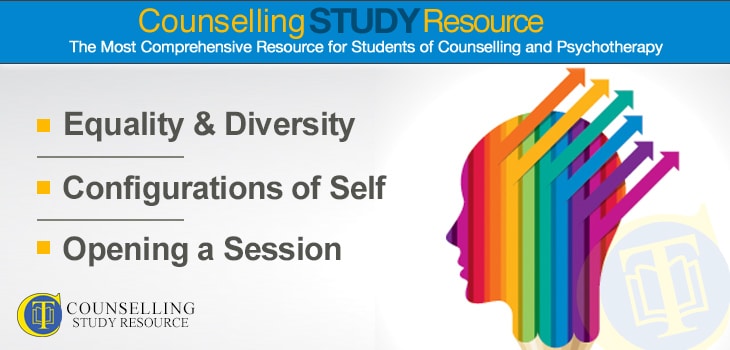004 – Equality & Diversity – Configurations of Self – Opening a Session – CPD
In the fourth episode of the Counselling Tutor Podcast, Ken Kelly and Rory Lees-Oakes take a look at equality and diversity. ‘Theory with Rory’ looks at configurations of self, and ‘Skills with Ken’ at opening a counselling session. Finally, in ‘Ask Ken and Rory’, the presenters discuss the importance of continuing professional development (CPD).
Equality and Diversity
The Ethical Framework for the Counselling Profession states: ‘We will respect our clients as people by providing services that … endeavour to demonstrate equality, value diversity and ensure inclusion for all clients.’
In UK law, the Equality Act 2010 legally protects people from discrimination in the workplace and in wider society. It covers nine ‘protected characteristics’: age, disability, gender reassignment, marriage and civil partnership, pregnancy and maternity, race, religion and belief, sex, and sexual orientation.
As counsellors, it is our responsibility to treat every client as an individual (not succumbing to stereotypes), and to educate ourselves about other ways of life.
Configurations of Self
The theory of configurations of self – sometimes known as ‘the dialogical self’ – is quite a new idea in person-centred counselling.
While Rogers saw the self-concept as a single configuration of perceptions, Mick Cooper first suggested that people may be able to access and switch between a range of different self-concepts. Dave Mearns and Brian Thorne developed this idea, suggesting that each person has multiple configurations of self. Rory illustrates this with a quote from Star Trekby Captain Jean-Luc Picard, who spoke of ‘the many voices within the one’.
The idea is that we develop various alternative personalities that appear in certain circumstances. Each configuration has its own desires, needs, style and view of the world. During the course of a normal day, we may draw on various configurations of self.
Many writers have referred to Carl Rogers’ idea of conditional positive regard: that a client may limit their own self-acceptance because of fear, shame, regret, embarrassment, anger, or a sense of loss about themselves or others. These negative emotions, or constructs, are sometimes referred to as ‘not-for-growth configurations’. In other words, the negative side of the personality – the emotional inner voices that bring psychological pain – may hamper both happiness and self-understanding.
By exploring and examining these not-for-growth configurations in a safe, non-threatening and non-judgemental environment, the client can process their feelings, thoughts and behaviours – and so begin the process of checking the reality and impact on their lives. Rory provides an example from practice, based on a client who had experienced abuse and was blaming self for this.
It is not our job as counsellors to analyse the client’s configurations of self; rather, we can support the client by offering the core conditions as they choose to explore parts of themselves of which they may feel ashamed. A not-for-growth configuration can act as a massive ball-and-chain, dragging the client down in their life; counselling can support them to look at this and set themselves free.
Opening a Counselling Session
As trainee counsellors, we are marked on our skill in opening and closing a session. In this section, Ken presents a ten-minute example of the start of a counselling session, looking at contracting, including:
- what is on offer, including an explanation of person-centred counselling
- time boundaries
- health and safety
- ethical code followed
- the limits of confidentiality, including legal requirements, supervision and taping
- note-taking, access and storage.
CPD
How does CPD lead to ethical practice? CPD is our learning after qualification as a counsellor. This is vital for us to keep up-to-date, ensuring our practice meets the standards of our professional body (e.g. the BACP).
Rory’s key tip is to ‘stick to the knitting’: in other words, stick to the core approach you have been trained in, rather than trying to add whole new modalities (which require years of training to apply properly) after just reading a book or attending a short course.
Reading and CPD courses are great to enhance your knowledge and build on your core training, but choose them with care. Professional journals – such as Therapy Today from the BACP – are invaluable.


